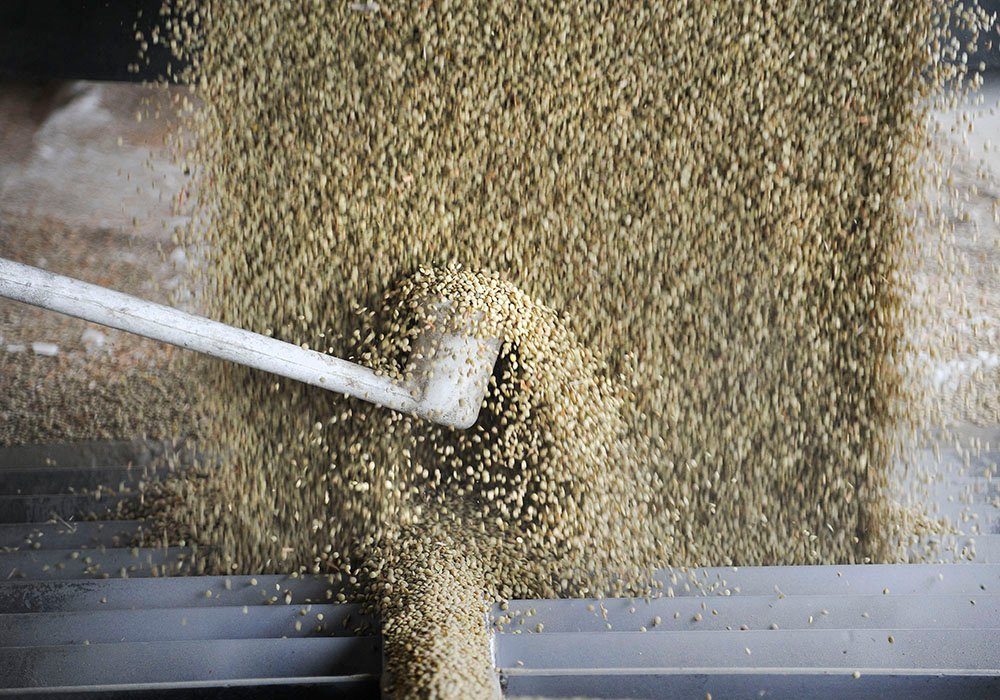Tight green lentil supply gives prices a boost

The green lentil market is going on a bull run in 2021-22, says a pulse market analyst.
“Globally, we’re looking at an unusually tight supply situation,” Stat Publishing analyst Brian Clancey told delegates attending the Global Pulse Confederation’s Pulses 2.1 virtual conference.
He is forecasting 1.57 tonnes of world supply, down 12 percent from last year and 10 percent below the five-year average.
“We’re looking at a big decline in available supplies of green lentils globally for the coming marketing year,” said Clancey.
“It’s a significant change.”
World ending stocks are projected to plummet to 64,000 tonnes, for a four percent stocks-to-use ratio.
He told delegates to “expect prices to rise” as the year unfolds and the market is forced to ration demand.
Clancey is forecasting 488,000 tonnes of Canadian large green lentil production, a 19 percent drop from 2020-21 levels.
And that is based on average yields, which may not be in the cards due to dry seeding conditions.
He is forecasting 451,000 tonnes of exports, an 11 percent drop from the current marketing campaign.
“Canada’s capacity to export large green lentils is going to be compromised,” he said.
Acreage and production of small green lentils are expected to rise resulting in 223,000 tonnes of supply, a 10 percent increase.
Clancey is forecasting 184,000 tonnes of Canadian small green lentil exports, a six percent hike.
Elyce Simpson Fraser, a trader with Simpson Seeds, said most of the Canadian lentil growing region received about 75 millimetres of rain two weekends ago easing the early-season drought conditions.
Average yields are now a possibility but the crop still needs another 75 to 100 millimetres of moisture, she said.
Clancey is forecasting 308,000 tonnes of production in the United States. But carryover from the 2020-21 crop will be non-existent, so total supply will fall 22 percent to 309,000 tonnes.
He is pegging exports at 200,000 tonnes, or one-third lower than the current campaign.
Jeff Van Pevenage, president of Columbia Grain, thinks that outlook might be optimistic. The last drought year was 2017 when the average yield was 700 pounds per acre.
That would result in 190,000 tonnes of production, which is about half of the level of the past couple of years.
A crop that size would mean exports would have to be curtailed to 80,000 to 100,000 tonnes.
The U.S. would be able to meet the needs of U.S. food aid programs, the European Union, South America and Mexico but that’s about it. There would be no extra lentils to ship to smaller side markets.
If the U.S. receives timely rains, production could reach Clancey’s forecast levels but he thinks exports would be more like 175,000 tonnes. That would be enough to supply side markets like China, India and Pakistan.
A number of panelists warned buyers about rising freight costs. Loveraj Rai, a trader with ETG, said freight rates from Canada to India are up US$20 per tonne in the past six months, while rates to South America have risen $10 to $15 per tonne.
Clancey believes there could be slumping demand in some markets following the COVID surge in sales in 2020-21.
But Van Pevenage expects the opposite due to the global demise of just-in-time delivery systems.
“Buyers around the world need to reload their warehouses because they can’t buy just-in-time,” he said.
Contact sean.pratt@producer.com
Source: www.producer.com

